Enzymes(酶)
Enzymes are very efficient and specific catalyst proteins which react with 1 or few types of substrates in biochemical reactions and are responsible for bringing about almost all of the chemical reactions in living organisms. Enzymes speed up reactions by providing an alternative reaction pathway of lower activation energy. Without enzymes, reactions take place at a rate far too slow for the pace of metabolism which means that they speed up the chemical reactions in living things.
There are 2 types of enzymes, ones that help join specific molecules together to form new molecules & others that help break specific molecules apart into separate molecules. Enzymes play many important roles ouside the cell as well. One of the best examples of this is the digestive system. For instance, it is enzymes in your digestive system that break food down in your digestive system break food down into small molecules that can be absorbed by the body. Some enzymes in your digestive system break down starch, some proteins and others break down fats. The enzymes used to digest our food are extra-cellular since they are located outside our cells & enzymes inside our cells are intra-cellular enzymes. Enzymes are used in ALL chemical reactions in living things; this includes respiration, photosynthesis, movement growth, getting rid of toxic chemicals in the liver and so on. Enzymes are proteins that must have the correct structure to be active. They are very easily affected by heat, pH and heavy metal ions.
Ribonucleoprotein enzyme catalytic activity is located in the protein part but for some the catalytic activity is in the RNA part. A catalyst is any substance which makes a chemical reaction go faster, without itself being changed. A catalyst can be used over and over again in a chemical reaction and does not get used up.
Enzymes lower the amount of activation energy needed by binding to the reactants of the reaction they catalyze, thus speed up the reaction and can process millions of molecules per second. Enzymes are typically large proteins with high molecular weight that permit reactions to go at conditions that the body can tolerate.
Enzyme nomenclature is based on what the enzyme reacts with & how it reacts along with the ending ase.
Enzymes must get over the activation energy hurdle.
Enzymes change how a reaction will proceed which reduces the activation energy and makes it faster. The more we increase the enzyme concentration the faster the reaction rate for non-catalyzed reactions. Enzymes that are catalyzed reactions also increase reaction rate at higher level of concentration but up to a certain point called Vmax which means that the enzyme has reached its maximum point. The reaction is limited by both the concentrations of the enzyme and substrate. Enzymes as catalysts take part in reactions which provide an alternative reaction pathway. Enzymes do not undergo permanent changes and remain unchanged at the end of the reaction. They only change the rate of reaction, not the position of the equilibrium.Enzymes as catalysts are highly selective by only catalysing specific reactions due to the shapes of the enzyme’s molecule.
Enzymes contain a globular protein part called apoenzyme and a non-protein part named cofactor or prosthetic group or metal-ion-activator. Changes in temperature and pH have great influence on the intra- and intermolecular bonds that hold the protein part in their secondary and tertiary structures.
Examples of cofactors are 1. Prosthetic group that are permanently bound to the enzyme. 2. Activator group which are cations (positively charged metal ions) & temporarily bind to the active site of the enzyme. 3.Coenzymes, usually vitamins or made from vitamins which are not permanently bound to the enzyme molecule, but combine with the enzyme-substrate complex temporarily. Enzymes require the presence cofactors before their catalytic activity can be exerted. This entire active complex is referred to as the holoenzyme.
Without enzymes, our guts would take weeks to digest our food, our muscles, nerves and bones would not work properly and so on…
Main Enzyme category groups:
Oxidoreductases:
All enzymes that catalyse oxido-reductions belong in this class. The substrate oxidized is regarded as a hydrogen or electron donor. The classification is based on 'donor:acceptor oxidoreductase'. The common name is 'dehydrogenase', wherever this is possible; as an alternative, 'acceptor reductase' can be used. 'Oxidase' is used only where O2 is an acceptor. Classification is difficult in some cases, because of the lack of specificity towards the acceptor.
Transferases:
Transferases are enzymes that transfer a group, for example, the methyl group or a glycosyl group, from one compound (generally regarded as donor) to another compound (generally regarded as acceptor). The classification is based on the scheme 'donor:acceptor grouptransferase'. The common names are normally formed as 'acceptor grouptransferase' or 'donor grouptransferase'. In many cases, the donor is a cofactor (coenzyme) that carries the group to be transferred. The aminotransferases constitute a special case.
Hydrolases:
These enzymes catalyse the hydrolysis of various bonds. Some of these enzymes pose problems because they have a very wide specificity, and it is not easy to decide if two preparations described by different authors are the same, or if they should be listed under different entries. While the systematic name always includes 'hydrolase', the common name is, in most cases, formed by the name of the substrate with the suffix -ase. It is understood that the name of the substrate with this suffix, and no other indicator, means a hydrolytic enzyme. It should be noted that peptidases have recommended names rather than common names.
Lyases:
Lyases are enzymes that cleave C-C, C-O, C-N and other bonds by means other than by hydrolysis or oxidation. They differ from other enzymes in that two (or more) substrates are involved in one reaction direction, but there is one compound fewer in the other direction. When acting on the single substrate, a molecule is eliminated and this generates either a new double bond or a new ring. The systematic name is formed according to 'substrate group-lyase'. In common names, expressions like decarboxylase, aldolase, etc. are used. 'Dehydratase' is used for those enzymes that eliminate water. In cases where the reverse reaction is the more important, or the only one to be demonstrated, 'synthase' may be used in the name.
Ligases:
Ligases are enzymes that catalyse the joining of two molecules with concomitant hydrolysis of the diphosphate bond in ATP or a similar triphosphate. 'Ligase' is often used for the common name, but, in a few cases, 'synthase' or 'carboxylase' is used. 'Synthetase' may be used in place of 'synthase' for enzymes in this class.
Products for Enzymes
- 41701(11)
- Activating Transcription Factor(3)
- Adenylate Kinase(10)
- AHCY(3)
- Aldolase(9)
- Asparaginase(5)
- Aurora Kinase(18)
- Beta Lactamase(3)
- Calcium and Integrin Binding(2)
- Calcium/Calmodulin-Dependent Protein Kinase(4)
- Carbonic Anhydrase(49)
- Casein Kinase(36)
- Cathepsin(52)
- Chitinase(5)
- Creatin Kinases(9)
- Cyclin(7)
- Cyclin-Dependent Kinase(18)
- Cyclophilin(23)
- Deaminase(14)
- Decarboxylase(12)
- Dehydrogenase(96)
- Discoidin Domain Receptor Tyrosine Kinase(2)
- DNA Polymerase(4)
- EGF Receptor(3)
- Endonuclease(6)
- Enolase(10)
- Enterokinase(5)
- Epimerase(3)
- Esterase(15)
- FGF Receptors(12)
- FK506 Binding Protein(10)
- Fructosamine 3 Kinase(2)
- Galactosidase(5)
- Glucosidase(32)
- Gluteradoxin(7)
- Glycogen synthase kinase(2)
- Glycosylase(10)
- Glyoxalase(3)
- Granzyme(7)
- Guanylate Kinase(2)
- Heparanase(2)
- Histone Deacetylase(3)
- Hydratase(10)
- Hydrolase(33)
- Hydroxylase(6)
- Isomerase(26)
- Jun N-terminal Kinase(1)
- Jun Proto-Oncogene(2)
- Kallikrein(26)
- Ligase(4)
- Lipase(14)
- Lipocalin(6)
- Lyase(9)
- LYVE1(3)
- Mitogen-Activated Protein Kinase(16)
- MMP(68)
- Mutase(11)
- Natural Enzymes(4)
- Nuclease(18)
- Nucleotidase(4)
- Nudix Type Motif(11)
- Other Enzymes(63)
- Oxidase(23)
- Oxygenase(12)
- Paraoxonase(3)
- Peptidase(41)
- Peroxiredoxin(10)
- Phosphatase(150)
- Phosphorylase(9)
- PI3-kinase(5)
- Polymerase(13)
- PPARG(2)
- Protease(15)
- Proteasome(54)
- Protein Kinase Akt1/PKB alpha(4)
- Protein Kinase-A(7)
- Protein Kinase-C(3)
- Protein Kinases(86)
- Protein Tyrosine Phosphatase(10)
- Reductase(60)
- Secreted Phospholipase A2(10)
- Serine Threonine Kinase(4)
- Sulfatase(8)
- Synthase(23)
- Synthetase(33)
- TGFBR(3)
- TGM2(3)
- TIMP(10)
- TPA(4)
- Transferase(156)
- Tyrosine Kinase(9)
- Ubiquitin Conjugating Enzyme(39)
- Uromodulin(4)
- VEGF Receptors(14)
- Transaminase(19)
- Hexokinase(6)
- TIE1(6)
- Cat.No. 产品名称 Information
-
GP21539
DAAO Human
D-Amino Acid Oxidase Human Recombinant

-
GP26144
DAAO Human, Active
DAAO Human Recombinant produced in E

-
GP21540
DARS Human
Aspartyl-tRNA Synthetase Human Recombinant

-
GC68147
dAURK-4 hydrochloride
dAURK-4 hydrochloride 是 Alisertib 的一种衍生物,是一种有效的选择性 AURKA (Aurora A) 降解剂。dAURK-4 hydrochloride 具有抗癌作用。
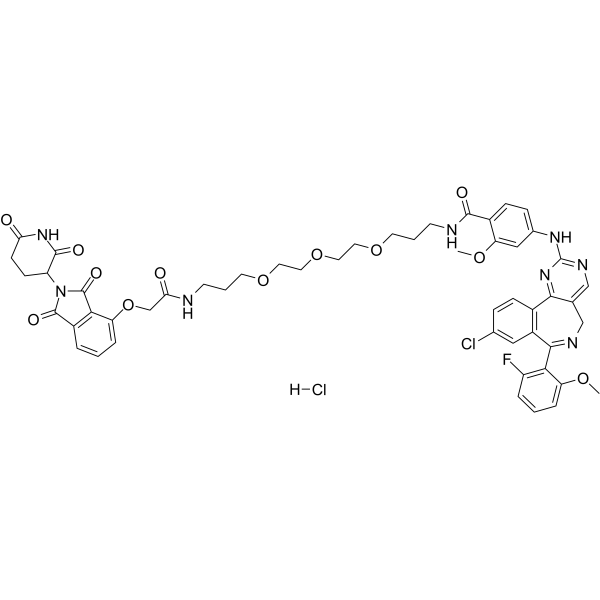
-
GC64607
Dazcapistat
Dazcapistat 是一种有效的钙蛋白酶 (calpain) 抑制剂,对 calpain 1, calpain 2 和calpain 9 的 IC50 值为 <3 μM (详细信息请参见专利WO2018064119A1, compound 405)。
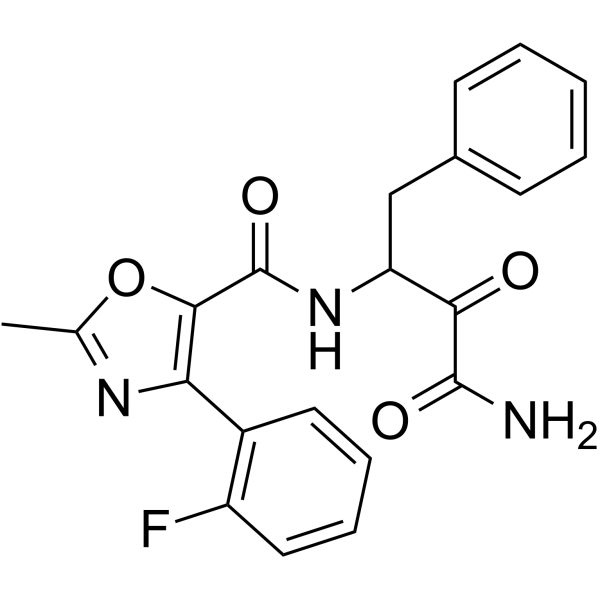
-
GP21541
DBH Human
DBH 人类重组

-
GC74000
DBPR728
DBPR728是6K465的酰基前药,携带较少的氢键供体。
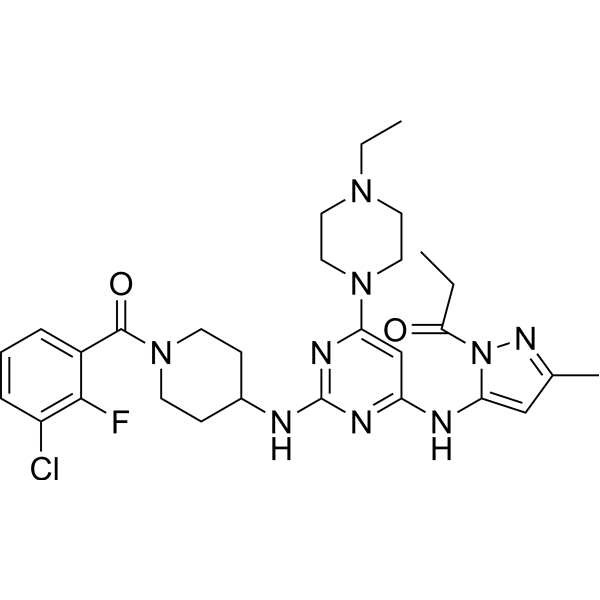
-
GP22479
DCK Human
Deoxycytidine Kinase Human Recombinant

-
GP21542
DCPS Human
Decapping Enzyme, Scavenger Human Recombinant

-
GP21543
DCT Human
Dopachrome Tautomerase Human Recombinant

-
GP21544
DCTD Human
dCMP Deaminase Human Recombinant

-
GP21545
DCTPP1 Human
dCTP Pyrophosphatase 1 Human Recombinant

-
GP21546
DCXR Human
Dicarbonyl/L-Xylulose Reductase Human Recombinant

-
GP21547
DCXR Human, Bioactive
Dicarbonyl/L-Xylulose Reductase Human Recombinant, Bioactive

-
GC72910
DD1
DD1蛋白酶体抑制剂,靶向急性髓系白血病(AML)凋亡过程中Bax的激活和P70S6K的降解。
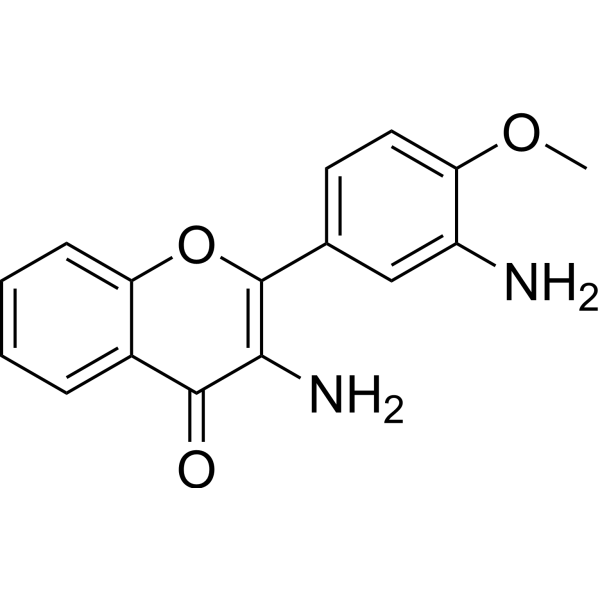
-
GP21548
DDAH1 Human
Dimethylarginine Dimethylaminohydrolase 1 Human Recombinant

-
GP22480
DDR1 Human
Discoidin Domain Receptor Tyrosine Kinase 1 Human Recombinant

-
GP22481
DDR2 Human
Discoidin Domain Receptor Tyrosine Kinase 2 Human Recombinant

-
GP21549
DDT Human
D-Dopachrome Tautomerase Human Recombinant

-
GP21550
DDT Mouse
D-Dopachrome Tautomerase Mouse Recombinant

-
GP21551
DECR2 Human
2,4-Dienoyl CoA Reductase 2 Human Recombinant

-
GC73741
DEG-77
DEG-77基于PROTAC的IKZF2和CK1α降解剂,具有适合体内研究的药代动力学特性、溶解度和选择性(t1/2=8h)。
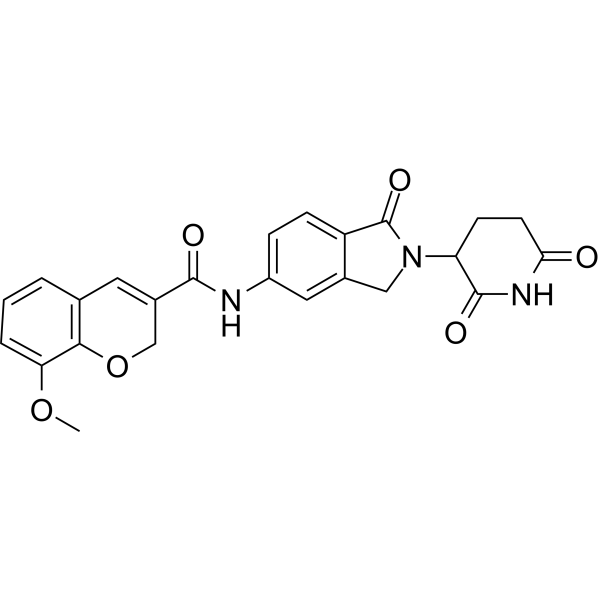
-
GP21553
DERA
Deoxyribose-Phosphate Aldolase E.Coli Recombinant

-
GP21552
DERA Human
Deoxyribose-Phosphate Aldolase Human Recombinant

-
GP21554
DESI1 Human
Desumoylating Isopeptidase 1 Human Recombinant

-
GP21555
DHFR Human
二氢叶酸还原酶人类重组

-
GP21556
DHFR Mouse
Dihydrofolate Reductase Mouse Recombinant

-
GP21557
DHODH Human
二氢乳清酸脱氢酶人重组体

-
GP21558
DHPS Human
Deoxyhypusine Synthase Human Recombinant

-
GP21559
DHRS4 Human
Dehydrogenase/Reductase Member 4 Human Recombinant

-
GP21560
DHRS9 Human
Dehydrogenase/Reductase Member 9 Human Recombinant

-
GC47210
Dichlorphenamide-13C6
Diclofenamide-13C6
An internal standard for the quantification of dichlorphenamide
-
GP21561
DIMT1 Human
DIM1 Dimethyladenosine Transferase 1 Human Recombinant

-
GC71877
Diphlorethohydroxycarmalol
Diphlorethohydroxycarmalol一种根轮青霉素,是一种口服活性α-葡萄糖苷酶和α-淀粉酶抑制剂,IC50分别为0.16 mM和0.53 mM。
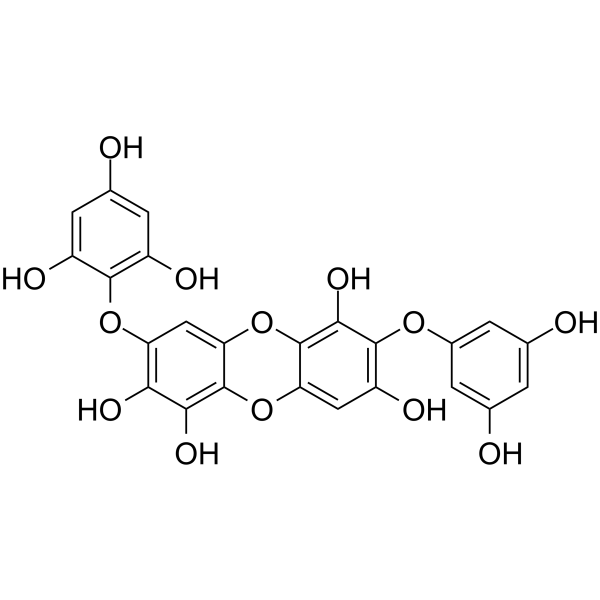
-
GC39295
DJ001
DJ001 是一种高度特异性,选择性和非竞争性的蛋白酪氨酸磷酸酶-σ (PTPσ) 抑制剂,IC50 为 1.43 μM。DJ001 对其他磷酸酶无抑制活性,对蛋白质磷酸酶 5 仅有中等抑制活性。DJ001 促进造血干细胞再生。
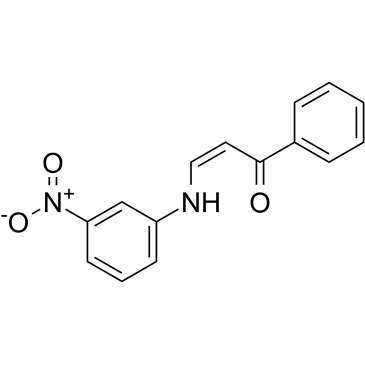
-
GP21562
DLAT Human
Dihydrolipoamide S-Acetyltransferase Human Recombinant

-
GP21563
DLD Human
Dihydrolipoamide Dehydrogenase Human Recombinant

-
GP21564
DLST Human
Dihydrolipoamide S-Succinyltransferase Human Recombinant

-
GP21565
DMGO
Dimethylglycine Oxidase Recombinant

-
GP21439
DNase Bovine

-
GP21566
DNase Human
脱氧核糖核酸酶 I 人类重组

-
GP21567
DNMT3L Human
DNA Cytosine-5--Methyltransferase 3-Like Human Recombinant

-
GP21568
Dopa Decarboxylase Human
Dopa Decarboxylase Human Recombinant

-
GC47267
Dorzolamide-d5 (hydrochloride)
L-671,152-d5, MK-507-d5
A neuropeptide with diverse biological activities
-
GC63621
Doxycycline
多西环素
Doxycycline(多西环素DOX)是一种四环素衍生物的广谱抗生素,通过干扰细菌核糖体30S亚基A位点上活化的氨基酰基tRNA的结合来抑制蛋白质合成。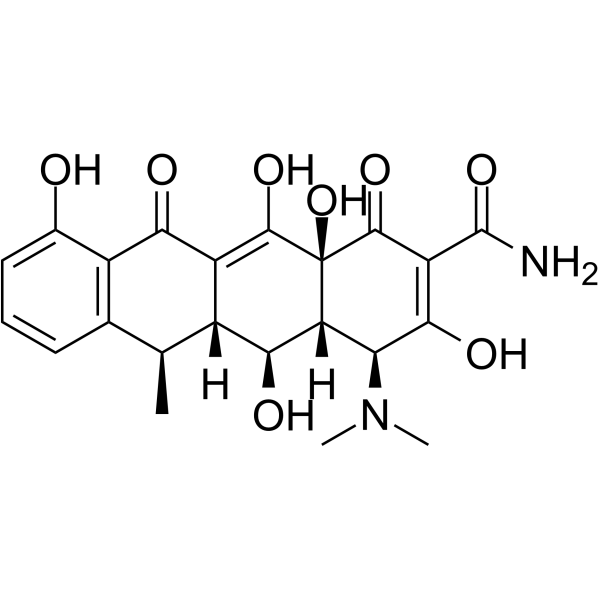
-
GC62943
DPM-1001 trihydrochloride
DPM-1001 trihydrochloride 是一种有效的,特异性的,具有口服活性的,且非竞争性的蛋白酪氨酸磷酸酶 (PTP1B) 抑制剂,其 IC50 为 100 nM。DPM-1001 trihydrochloride 是特异性 PTP1B 抑制剂 MSI-1436 (IC50=600 nM) 的类似物。DPM-1001 trihydrochloride 具有抗糖尿病特性。

-
GP21569
DPP4 Human
二肽基肽酶 4 人重组体

-
GP21570
DPP4 Protein
Human Dipeptidyl Peptidase-IV

-
GP21571
DsbA
Disulfide Oxidoreductase Recombinant

-
GP26145
DsbA E.Coli
DsbA E





